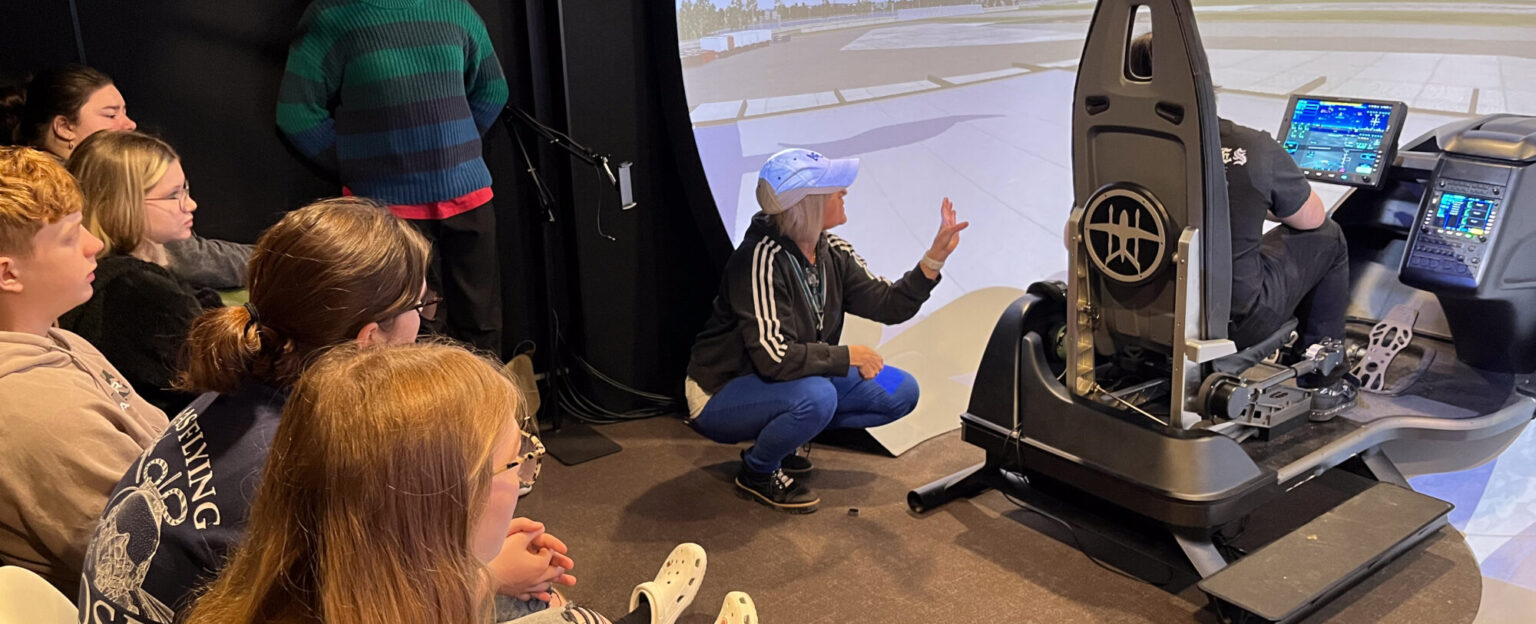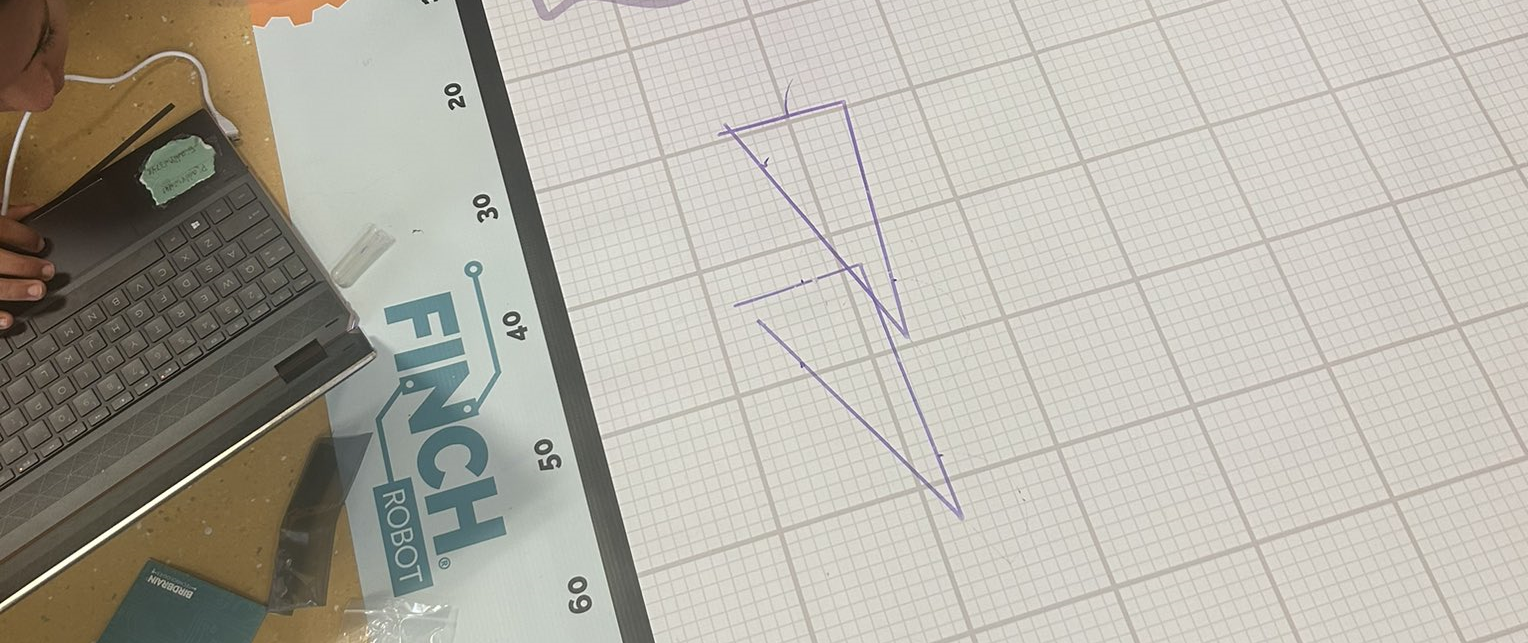by Kelly Gaier Evans, Director of the Ohio STEM Learning Network (OSLN)
 The OSLN STEM Classroom Grants offer educators around our state a chance to bring something new to their classrooms.
The OSLN STEM Classroom Grants offer educators around our state a chance to bring something new to their classrooms.
Applications close in less than two weeks, at 9 a.m. on September 3, 2024. I’ve written before about my tips for winning grants and themes from successful past applications. For 2024, here are three projects from last year’s awardees that really caught our eye. If you’re struggling to get inspired, take a look.
Whether you want to follow one of these initiatives or blaze your own trail, please take this message as my personal invitation to you. Submit! We can’t wait to hear about the things you’re excited to bring to students this year.
Highlighted examples for 2024
Applications open for OSLN STEM Classroom Grant Program
Example Project: Full STEM Ahead
School: Elementary
Focus Area(s): Building a culture of STEM
Applicant involvement with STEM at time of application: Beginner
Short description: Students will use technology to demonstrate understanding of science concepts and/or procedures taken to arrive at their conclusion. They will work through the design thinking process as they think critically about how to make a structure that a first grader could use. Students will present this information to their peers and/or other grade levels with a poster presentation demonstrating the design process as well as physically constructing the building structure.
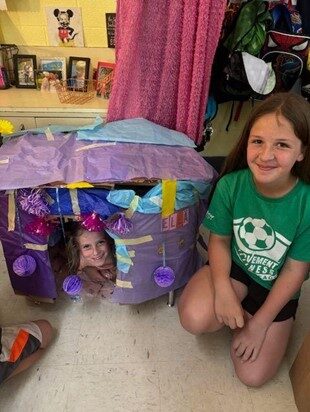 Our 5th grade students will partner with the first-grade classes and be assigned to a 1st grade student. They will collaborate with their first graders to discuss the requirements and parameters of the project. Modifications may need to be made throughout the project as each member contributes their own thoughts. They will design a structure for the 1st grader to be able to sit in so they can use it as part of their theme on camping.
Our 5th grade students will partner with the first-grade classes and be assigned to a 1st grade student. They will collaborate with their first graders to discuss the requirements and parameters of the project. Modifications may need to be made throughout the project as each member contributes their own thoughts. They will design a structure for the 1st grader to be able to sit in so they can use it as part of their theme on camping.
Our 5th grade learners will be introduced to CAD and use a program such as Tinkercad to create a virtual structure before building a prototype using the classroom Maker Space and Make Do supplies. They will use the Engineering Design Process and collaborate with their first-grade partners and community partners to receive feedback on their design. Students will also have the opportunity to present their final product to our School Board.
Before building their structure, a civil engineer from the community will come in and demonstrate how they use AutoCAD and Chief Architect at their place of business. They will share the successes and failures of design through technology.
After building the prototype, the 5th graders will design a poster using Canvas or other programs. They will learn how to use the Poster Maker to then print out their presentations. They will utilize graphic design to display their process and explain their structure as they present it to their audience. Students will also have the opportunity to present their final product to our School Board. They will share their graphic design journey, explain the engineering design process using poster maker, and present their final product.
Example Project: 8th Grade Knights Build Remote Controlled Submersibles
This project even earned a write-up in the Springfield News-Sun – Greenon students get hands-on trip to Springfield airport
School: Middle School
Focus Area(s): STEM as an approach to teaching and Learning, Pathways to Success in STEM Careers
Applicant involvement with STEM at time of application: Champion – Seasoned STEM educator
Short description: After learning from adults in the field, 8th grade students will collaborate to design then build a Pufferfish remotely operated submersible vehicle. The design teams will test then refine their design as they attempt to accomplish a specific mission (based on authentic global challenges) in a local swimming pool.
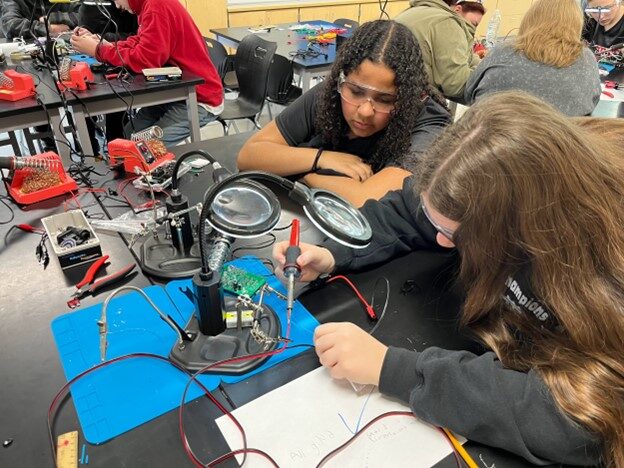 All 125, 8th grade students at Greenon Local Schools will be introduced to the design, manufacturing and operation of remotely operated vehicles. This project will occur yearly, so the impact numbers should be several times greater than the initial 125 pupils.
All 125, 8th grade students at Greenon Local Schools will be introduced to the design, manufacturing and operation of remotely operated vehicles. This project will occur yearly, so the impact numbers should be several times greater than the initial 125 pupils.
Post implementation: The ROV (Remotely Operated Vehicle) unit deepened the students’ understanding of STEM in many ways. The 8th-grade students began by learning to solder the switches and boards that would later become parts of the control box. Many of my students had never worked with tools before, so being able to create a complex system and perform a task like soldering, which many people can’t do, was a victory in itself. After constructing their control boxes, the students then wired their propulsion systems and developed a method for tether management. They then designed their ROVs to meet the needs of specific missions themed around real-life scenarios. The first was a salvage mission from the bottom of the ocean, where the students had to design their prototype to collect rings from the bottom of the pool. The second simulated an oil spill, requiring the students to redesign their build to skim the surface of the water and collect as many ping pong balls as possible.
Interacting with passionate professionals in ROV/UAV/UAS fields broadened students’ perspectives. Through video conferences, Gabby Inglis, a ROV pilot, introduced various ROV types, missions, and career pathways to each class. Andrea Schumuttermair from NOAA, co-teaching for two days, provided technical insights and discussed career opportunities.
Finally, my students were able to have a wide range of intimate experiences at the Springfield Airport. This was far more than a tour or a typical field trip. I helped coordinate interactive activities with the different companies and organizations at the airport, aiming to ensure they had an awareness of related careers that could be found locally. These careers ranged from aviation maintenance to drone piloting to designing vertiports to the marketing and branding associated with the emerging flying car industry that is slowly gaining more presence in our region.
Example Project: The Amazing Flying Mathematicians
School: High School
Focus Area(s): STEM as an approach to teaching and Learning
Applicant involvement with STEM at time of application: Champion –Seasoned STEM educator
Short description: Students will use an inquiry-based learning approach to learn mathematics concepts and processes by programming the motion of a robotic bird. Students will explore the stories of history, create mathematical artwork, and learn the principles of software development and computer science with the amazing flying robotic bird.
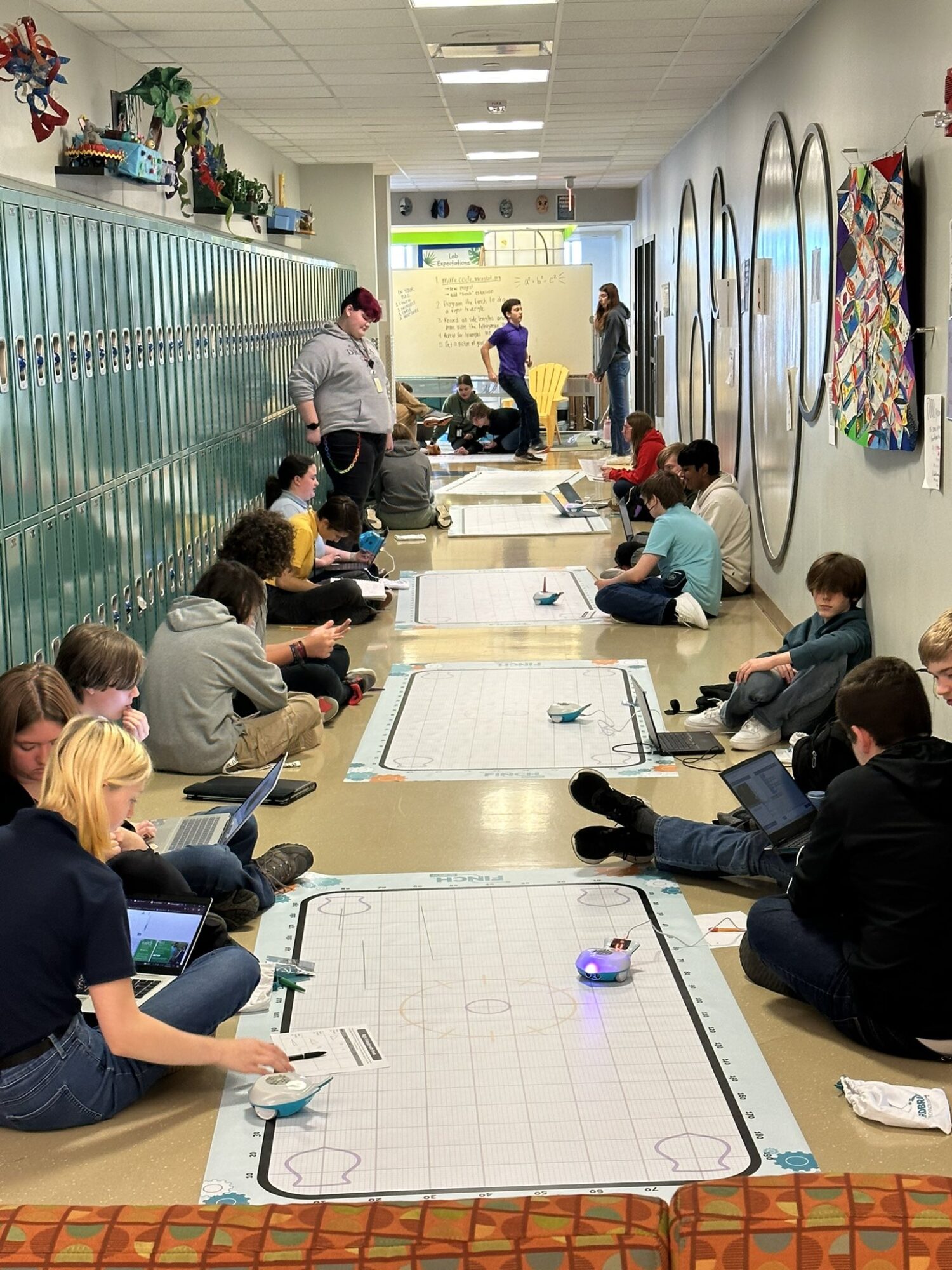 Through an interdisciplinary approach, students will learn how birds migrate by first researching migration patterns and techniques in ELA. In history they will compare and contrast bird migration patterns to the routes of western explorers. Students will then apply their knowledge of linear equations and the coordinate plane to recreate migration patterns and constellations using Finch robots.
Through an interdisciplinary approach, students will learn how birds migrate by first researching migration patterns and techniques in ELA. In history they will compare and contrast bird migration patterns to the routes of western explorers. Students will then apply their knowledge of linear equations and the coordinate plane to recreate migration patterns and constellations using Finch robots.
Students will first learn to model linear equations using slope-intercept form using Finch robots. While exploring the concept of slope they will also learn software development basics like programming sequential steps, basic computational thinking skills, troubleshooting and debugging skills, and various programming principles.
The final piece of the project includes students recreating a constellation on the math mat. Students will find the line the robot would follow to draw the constellation. Next, students will program the bot to draw the constellation automatically. This requires students to apply design thinking to determine how to best use mathematical linear equations to graph the constellation efficiently and accurately.
Post-implementation: By the end of the year as an educator most students have disengaged as they prepare for the summer, but this year was different. Instead of trying to just get them to remotely participate, I looked down the hallway and saw two classes (50 students) lining the hallway actively engaging in problem solving and applying concepts they had learned throughout the year. They worked collaboratively to program the Finch bots for their final project challenge automated drawing of right triangles. They laughed and tested and instead of hearing “I’m stuck” or “I don’t know what to do” I watched as our math teacher held a full integrated technology lesson in her class using the Finch Robots. They successfully did this independently applying the design process to determine the largest right triangle the finch bot could draw as well as the smallest.
As an IT instructor seeing your students successfully apply a skill in another content and context without your help is the moment when you realize the success of your prior lessons. The integration we had previously worked on, our application project not only allowed for initial learning of programming principles but then allowed for our students to then apply those skills without support. To see them collaboratively problem solving and engaging the last week of school was truly the best feeling ever. Better yet for them to do it and support each other, I knew they not only truly learned the principles of programming, but also learned valuable skills like collaboration, innovation, resiliency, and more.
Going forward, our BPA students are using them to teach campers some wizard themed programming and our math teacher has claimed them and looks forward to further integrations. The robotics set was a wonderful, engaged learning activity for our students this year and we can’t wait to design more integrated learning experiences going forward
